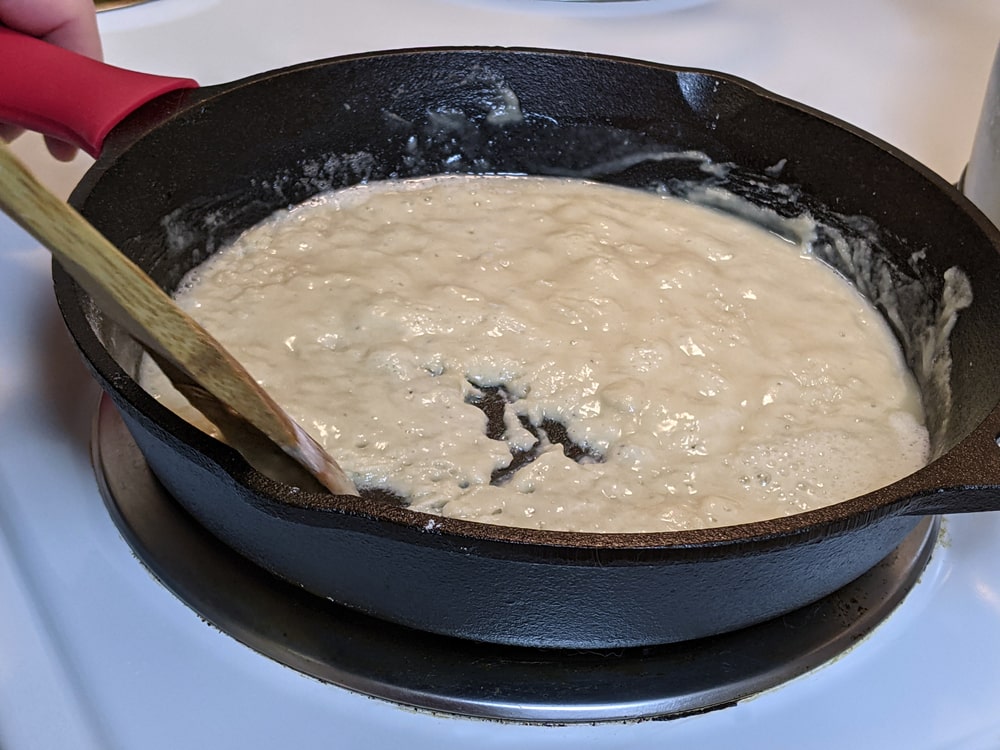
We all love soups and sauces. Ranging from full-course meals to appetizers, these sauces and soups are a part of every meal we order at the restaurants. However, one thing is common between these soups and sauces, the thickness!
The thickness of sauces and soups is achieved by adding thickeners, such as roux vs. slurry. In this article, you will find out information about these two thickeners!
Roux vs Slurry
Roux
Roux is one of the most common and popular thickening agents out there. Roux is made with a flour base and some culinary experts have also created the gluten-free version of roux. Roux has become one of the most competitive thickeners out there. Originally, this thickening agent has a French origination which means browned butter (yes, the literal meaning).
As for the preparation of roux, the butter is heated up and is combined with flour (you can also use other types of fat). There are different colors available in the roux, such as black, blonde, and brown. The color of the roux depends on how much the flour is heated. That being said, it’s safe to say that roux is a versatile thickener with different colors.
For the most part, roux is used for thickening the sauces, and equal parts of fat or butter and flour are used to make the roux. When melted butter or fat is added to flour, you have to blend it until it achieves a smooth consistency. It can be cooked at different temperatures and for different time cycles for achieving the desired brownness. As far as fats are concerned, lard and bacon drippings are used.
We have mentioned that roux is used as a thickening agent for sauces but it goes well with stews, gravies, and soups as well. Roux can be used as the dish base. In the case of French cuisine, butter is used with flour but other cuisines use vegetable oil and lard for making the roux. In particular, roux is used in Espagnole sauce, bechamel sauce, and velouté sauce (the famous French sauces).
When it comes down to Cajun cuisine, roux is made with oil and/or bacon fat rather than butter. For Cajun cuisine, roux is heated to achieve the dark brown and medium brown color. However, it’s essential to note down that more heating will result in thinner roux but the flavor will be much richer. Roux is often made with lard for Central European cuisine.
Slurry
The slurry is another thickening agent which achieves thickness by cooling the mixture. The slurry is a thickening agent which is made with cornstarch and cold water. Some people also use milk for mixing cornstarch. Generally, cornstarch is made in advance and is added to cold water or milk for thickening up the texture. Also, when it comes down to cornstarch, the no-gluten version is used.
The slurry is widely used in California since it has a no-gluten configuration. It’s pretty obvious that slurry is a fancy word but it’s one of the simplest techniques to achieve the right thickness for liquid dishes. To illustrate, the slurry is a concentrated liquid (the starchy liquid, in particular) that can be used for thickening the gravies and sauces.
The most versatile thing about slurry is that cornstarch can be mixed with apple juice to make the apple pie filling. Also, you can mix cornstarch with broth to make a rich and flavorful thickener (it will add flavor to the recipe as well). On top of everything, cornstarch is not the only ingredient used because some people also use flour for making a slurry.
To illustrate, if you make a slurry with cornstarch, it will result in a clear thickener but slurry made with flour has an opaque appearance. It wouldn’t be wrong to say that slurry will be smoother and more consistent when made with cornstarch. Cornstarch slurry is suitable for thickening the teriyaki sauce and beef stews. On the other hand, flour slurry can be used in soups and gravies.
Some people also struggle with lumps with slurry but it can be avoided by whisking the mixture continuously while you add liquid to cornstarch. However, if the lumps still occur, you can use the mesh sieve for straining the slurry. Lastly, you can also blend the slurry in a blender to blend out the lumps.